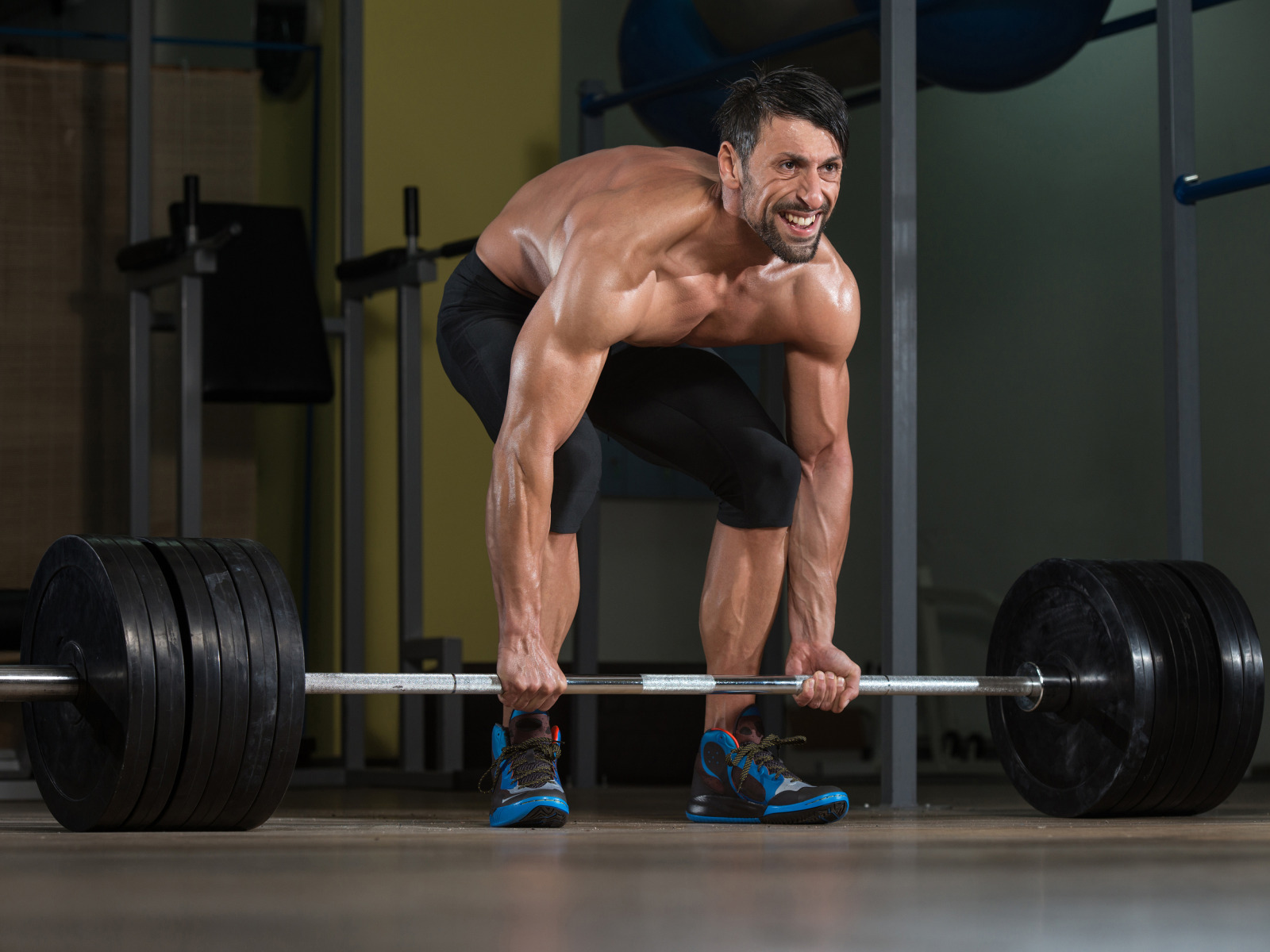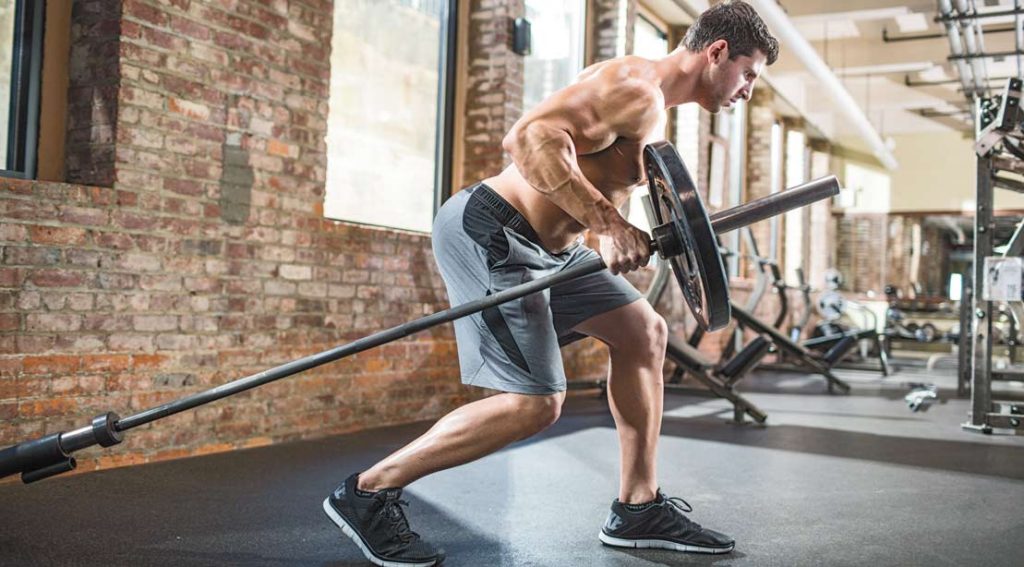Your muscle gains from a specific training program are highly variable. Take a look at the graph from this study. It shows the relative change in the physiological diameter of the quadriceps muscle. Fifty-three previously untrained subjects performed 4 sets of 10 repetitions of calf extensions with 80% RM and rest 2 minutes between sets, 3 times a week for 9 weeks. You think each subject has significantly increased strength and muscle mass during this period, don’t you?
The bar on the far right shows an average muscle gain of 5%. But look at the huge individual differences. Changes in muscle size ranged from -2.5% to nearly 20%. Despite the increase in the majority, five of the subjects actually lost muscle. It is noteworthy that the predisposition to hypertrophy is specific to the muscle, which means that some muscles grow relatively easily, while others, it would seem, refuse to grow . This becomes clearer when we turn to this study, which evaluated 45 men and found one man to have 484% more gluteal muscle volume (almost 5 times) compared to another.
Changes in strength are also significantly different between people. Note the individual results from this study, which assessed combination training, that is, the simultaneous training of strength and endurance.
The figure shows the increase in isometric leg strength over a 21-week training period. One subject became 12% weaker, while the other was 87% stronger! How in this world does an untrained person become weaker after strength training twice a week for 4 months? However, this same study found that highly responsive aerobic capacity training did not respond as well to maximum strength training. Another study showed that high responsive strength training increased strength significantly more by doing 2 sets of squats per week, compared to medium to low responsive ones who performed 8 to 16 sets of squats per week .
These dramatic differences in response increases in strength and muscle mass are highly predictable in the literature because they are replicated in many studies. Some people achieve significantly greater gains in strength and mass more easily than others . However, it should be noted that people with the greatest gains in strength do not always gain muscle mass better, and vice versa. This phenomenon is significantly influenced by genetics and we know that muscle growth is directly related to the functions of the satellite cell system, as well as the amount of growth factors you produce. According to this According to research, testosterone levels in male weightlifters range from 58 ng / dL to 1,154 ng / dL (mean 420 ng / dL), and in women, range from 0 ng / dL to 923 ng / dL (mean 78 ng / dl).

Individualization of program design
All of this information shows that for optimal program design, you need to consider the individual response to changes in training and nutrition. You can use scientific data for as a starting point, but eventually it will take some individual experimentation to figure out what works for you.
For example, suppose you are developing a resistance training program. You need to think about your individual response to the following factors:
- volume
- frequency
- load
- efforts
- choice of exercises.
For example, consider volume. This recent meta-analysis on volume and hypertrophy showed that to gain muscle mass, you need to do 10 or more sets per muscle group per week. This is in the case of averages. For example, 15 sets per week might work great for your workout buddy, but for you more than 8 sets will do nothing but joint pain. Exercise selection also matters; 10 sets of calf extensions per week is not the same as 10 sets of squats. Moreover, due to genetic characteristics, some people increase lower body strength more with one set than with multiple sets .
Anatomical range of motion in the joints
Your anatomy will affect your exercise choices. Many exercises require good joint mobility to be performed correctly. If your skeletal structure does not allow the joints to move at the full amplitude required for the exercise, then you will not be able to perform this exercise correctly.
Imagine the hip joint. Many popular “knee dominant” exercises require good hip mobility to perform properly. For example, deep squats, leg presses, pedestals, and pistol squats require at least 120 degrees of hip flexion at the bottom of the movement. If you want to sit deeper, after maximum flexion of the hip joints, this can only be done by tilting the pelvis back and flexing the spine in the lumbar spine (the well-known “nod of the pelvis”). A slight backward tilt of the pelvis is acceptable, but excessive movement is dangerous and leads to hip and back problems.
Take a look at the table below from this study.
The researchers evaluated hip flexion in 200 people. A difference in mobility of 60 between the most and the least flexible people. The least flexible person was able to flex the hip only 80 degrees, while the most flexible reached 140 degrees of flexion. The first person will not be able to sit down without a nod of the pelvis even to parallel, while the last person will sit down deeply without problems.
How does this apply to you? If you have good mobility, then you will probably do most of the mechanics exercises like in the textbook, which is great, since a large range of motion usually leads to an advantage in hypertrophy in research. And if you have very low flexibility, then you are probably prohibited from doing exercises that require good stretching. In addition to the aforementioned squats, this may include bar dips, dumbbell bench presses, handle dips, dilutions, straight-legged deadlifts, weighted bends, etc.
While it is obvious that these exercises can be easily adapted to suit the human anatomy (just doing as deep as the body allows), most people with limited mobility tend to go deeper than necessary in an attempt to bring their range of motion closer to normal, and this leads to problems. with shoulder, hip joints and lower back. The accumulation of damage results in severe pain that will not allow optimal hypertrophy to be achieved, as pain interferes with muscle activation.


